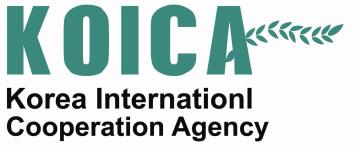
Estrategia regional de gestión de la erosión costera
Solución completa

Erosión costera en Vietnam.
Le Van Cong
La estrategia regional aborda la erosión costera debida a la subida del nivel del mar y las lagunas políticas y operativas en seis países de los mares de Asia Oriental. Las autoridades nacionales evalúan la situación, las lagunas y las necesidades nacionales e identifican las orientaciones y las acciones prioritarias para hacer frente a la erosión costera. Los informes nacionales sobre resultados y recomendaciones se presentan, debaten y acuerdan mediante la participación pública y un proceso de consulta nacional con todas las partes interesadas.
Última actualización: 30 Sep 2020
8268 Vistas
Contexto
Défis à relever
La erosión costera inducida por el aumento del nivel del mar amenaza los ecosistemas costeros, las comunidades y las economías de seis países litorales de Asia Oriental. La estrategia proporciona un marco regional y orientaciones prácticas para paliar las lagunas operativas y políticas. Aumenta la capacidad de las partes interesadas de los países participantes para gestionar eficazmente los recursos costeros y los ecosistemas asociados.
Ubicación
Asia
Sudeste Asiático
Procesar
Resumen del proceso
La evaluación nacional de la vulnerabilidad a la erosión costera debida a la subida del nivel del mar (Bloque de construcción 1) necesita la aprobación de todas las partes interesadas en el marco de una reunión nacional de consulta (Bloque de construcción 2) para asegurar el éxito de la implementación, en particular de las actividades prioritarias y de los proyectos piloto. Los informes nacionales de evaluación finalizados (Building block 1) y aprobados conjuntamente (Building block 2) son la condición previa para elaborar el informe regional de evaluación (Building block 3) que resume los principales hechos y recomendaciones para cada país. La concienciación y el reconocimiento de la necesidad de la gestión de la erosión costera para aumentar la resiliencia de las costas y garantizar los medios de subsistencia de la población, así como el apoyo y el compromiso de los gobiernos nacionales y de los socios para el desarrollo, son factores de éxito de cada módulo y de la solución.
Bloques de construcción
Evaluación nacional de la vulnerabilidad costera
La evaluación nacional -análisis de situación- de la vulnerabilidad costera proporciona una visión detallada de los estados de erosión aplicando un formato estandarizado acordado por todos los países participantes. Incluye políticas relevantes, mecanismos legales e institucionales, lagunas y necesidades e intervenciones pertinentes para hacer frente a la erosión costera a nivel nacional y subnacional. Se definen las prioridades de acción (intervenciones piloto) que deben aplicar los gobiernos.
Factores facilitadores
Condiciones para su adopción en otros lugares: - Concienciación y reconocimiento del problema de la erosión costera y la subida del nivel del mar y de la importancia y el valor de las evaluaciones nacionales para abordar el problema. - Pleno apoyo y compromiso de los gobiernos y autoridades nacionales, incluidos los socios para el desarrollo.
Lección aprendida
La gestión de la erosión costera implica a una serie de ministerios y autoridades de distintos niveles gubernamentales. Reunirlos a todos para debatir y llegar a un acuerdo sobre los informes de evaluación y las intervenciones piloto es todo un reto que el proyecto abordó mediante consultas nacionales. Los informes nacionales de evaluación del contexto nacional y de la magnitud del problema de la erosión costera servirán de referencia fundamental para el desarrollo de nuevos planes, políticas, estrategias y programas nacionales de gestión integrada de las costas, o para la actualización de los ya existentes, tanto a nivel nacional como local. Con actividades específicas de capacitación e intervenciones piloto identificadas, los informes nacionales podrían integrarse en un informe regional que podría utilizarse posteriormente en el desarrollo de futuros programas regionales de gestión de la erosión costera para su aplicación regional.
Reunión nacional de consulta
Reunir a todas las autoridades nacionales competentes y a las partes interesadas en una reunión organizada por la institución nacional responsable de la gestión costera para intercambiar toda la información pertinente sobre la erosión costera y sensibilizar a las autoridades nacionales y locales sobre los problemas y las necesidades de la erosión costera. Presentar todas las conclusiones y recomendaciones, en particular las intervenciones piloto a desarrollar e implementar por cada país para su acuerdo conjunto.
Factores facilitadores
Condiciones para su adopción en otros lugares: - Conciencia del problema. - Compromiso y apoyo de los gobiernos y autoridades nacionales para definir y aplicar la solución para una gestión eficaz de las costas.
Lección aprendida
El compromiso y el apoyo de los gobiernos y autoridades nacionales para aplicar todas las etapas necesarias de la solución para una gestión eficaz y sostenible de la erosión costera es un factor clave para el éxito. El establecimiento de puntos focales nacionales del proyecto en cada uno de los países participantes facilita la creación de redes entre el proyecto y todas las demás partes interesadas a nivel local, nacional y regional. Las consultas nacionales con las autoridades nacionales y las partes interesadas es primordial para establecer un diálogo transparente y la cooperación entre todos los socios interesados, para garantizar que se comparte la información esencial y los conocimientos técnicos sobre los problemas que hay que resolver. Las reuniones nacionales de consulta resultan cruciales para garantizar los debates conjuntos y el acuerdo de todas las partes interesadas. Fomentan el aprendizaje cruzado y la creación de equipos, al tiempo que potencian la cooperación, la coordinación y el diálogo entre las partes interesadas.
Informe de evaluación regional
Resumir las evaluaciones nacionales en un formato estandarizado para proporcionar la base y un libro de recursos para un marco de gestión integrada y sostenible de las zonas costeras basado en los ecosistemas. Recapitular información valiosa para la gestión eficaz de la erosión costera en toda la región con el fin de mejorar la resiliencia costera y, en consecuencia, reducir los impactos del aumento del nivel del mar en los ecosistemas, la economía, la seguridad, la salud, la calidad de vida y los medios de subsistencia de las personas.
Factores facilitadores
Condiciones para la adopción en otros lugares: - Información sobre políticas y mecanismos jurídicos e institucionales, - Conocimiento de las intervenciones pasadas, presentes y previstas y del apoyo al desarrollo, - Lagunas y necesidades en materia de políticas, capacidades, disposiciones institucionales y marcos normativos, - Identificación, priorización y presupuestación de actividades, - Diseño y planificación de intervenciones piloto específicas, basadas en las necesidades y adecuadas para su futura reproducción o ampliación.
Lección aprendida
- no disponible -
Impactos
La solución refuerza las capacidades de las autoridades nacionales. Proporciona una referencia vital para el desarrollo o la revisión de planes, políticas, estrategias y programas de gestión integrada de las costas a nivel nacional y local. Los ejercicios nacionales de evaluación y consulta equipan a las autoridades nacionales y locales para abordar mejor los principales impactos de la erosión costera y la vulnerabilidad de las comunidades. La aplicación de intervenciones prioritarias o piloto pondrá de manifiesto la eficacia en la resiliencia de los ecosistemas, los medios de subsistencia de las comunidades locales y las políticas y estrategias nacionales.
Beneficiarios
Comunidades y administración costeras, autoridades nacionales y sociedad civil a gran escala.
Historia
Con un extenso litoral, la erosión costera es una amenaza constante para Vietnam y se está agravando como consecuencia del aumento de las tormentas y de la subida del nivel del mar provocada por el cambio climático, según informaron expertos en un taller celebrado en Hanoi el 17 de julio de 2013. En su intervención en el taller, en el que se debatió el informe nacional de evaluación sobre la erosión costera, el subdirector de la Administración de Mares e Islas de Vietnam, Vu Si Tuan, declaró: "Vietnam ha puesto en marcha una serie de programas a distintos niveles para evaluar la situación de la erosión y la deposición, sobre todo en regiones clave, y ha construido bases científicas para las medidas de prevención. Sin embargo, el país no ha sido capaz de resolver muchos problemas relacionados con esta amenaza. El proyecto YEOSU sobre erosión costera dirigido por el Órgano Coordinador de los Mares de Asia Oriental (COBSEA) es de gran ayuda para los miembros del COBSEA, entre ellos Vietnam" La redacción del informe nacional de evaluación de la erosión costera proporcionará información de entrada para que el COBSEA elabore un proyecto regional que aborde los retos planteados por el cambio climático en general y la erosión costera en particular.
Según el consultor del proyecto, Rey Molina, su objetivo es aumentar la capacidad de resistencia y gestión de los miembros de la COBSEA ante las amenazas de la erosión costera y la subida del nivel del mar. En el taller, los participantes sugirieron una serie de medidas, por ejemplo la protección de los bosques, la sensibilización de la población local y la creación de una base de datos sobre la erosión costera.
Conectar con los colaboradores
Otros colaboradores
Reynaldo F. Molina
Órgano de Coordinación de los Mares de Asia Oriental (COBSEA)





